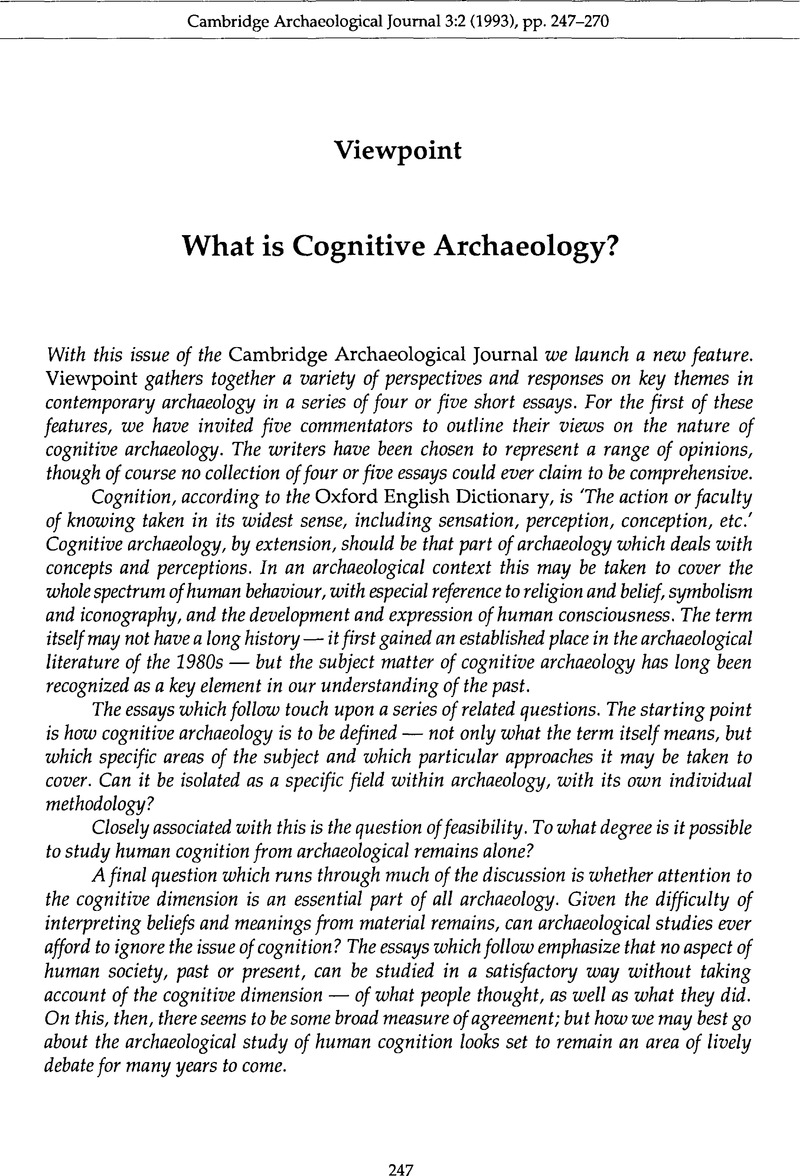Crossref Citations
This article has been cited by the following publications. This list is generated based on data provided by Crossref.
Meskell, Lynn
1995.
Goddesses, Gimbutas and New Age archaeology.
Antiquity,
Vol. 69,
Issue. 262,
p.
74.
Garfinkel, Yosef
1998.
Dancing and the Beginning of Art Scenes in the Early Village Communities of the Near East and Southeast Europe.
Cambridge Archaeological Journal,
Vol. 8,
Issue. 2,
p.
207.
Sabloff, Jeremy A.
and
Ashmore, Wendy
2001.
Archaeology at the Millennium.
p.
11.
Hoffecker, John F.
2007.
Representation and Recursion in the Archaeological Record.
Journal of Archaeological Method and Theory,
Vol. 14,
Issue. 4,
p.
359.
MacKie, Euan W.
2009.
The Prehistoric Solar Calendar: An Out-of-fashion Idea Revisited with New Evidence.
Time and Mind,
Vol. 2,
Issue. 1,
p.
9.
de Beaune, Sophie A.
2011.
L’archéologie cognitive.
p.
75.
Procopiou, Haris
2011.
L’archéologie cognitive.
p.
233.
Treuil, René
2011.
L’archéologie cognitive.
p.
11.
Alexandra Sumner, T.
2011.
Psychological components of middle paleolithic technology: The proceduralization of lithic core reduction.
Journal of Anthropological Archaeology,
Vol. 30,
Issue. 3,
p.
416.
Demarest, Arthur A.
2013.
Ideological Pathways to Economic Exchange: Religion, Economy, and Legitimation at the Classic Maya Royal Capital of Cancuén.
Latin American Antiquity,
Vol. 24,
Issue. 4,
p.
371.
Moro Abadía, Oscar
and
González Morales, Manuel R.
2013.
Paleolithic Art: A Cultural History.
Journal of Archaeological Research,
Vol. 21,
Issue. 3,
p.
269.
Frangipane, Marcella
2018.
Different Trajectories in State Formation in Greater Mesopotamia: A View from Arslantepe (Turkey).
Journal of Archaeological Research,
Vol. 26,
Issue. 1,
p.
3.
MATSUMOTO, Naoko
2021.
TOWARD AN INTEGRATIVE HUMAN HISTORICAL SCIENCE OF THE MIND, BODY AND MATERIAL.
PSYCHOLOGIA,
Vol. 63,
Issue. 2,
p.
216.
Schlaudt, Oliver
2022.
Exaptation in the Co-evolution of Technology and Mind: New Perspectives from Some Old Literature.
Philosophy & Technology,
Vol. 35,
Issue. 2,
Schreiber, Stefan
2022.
Resilienz als Prozess.
p.
81.



